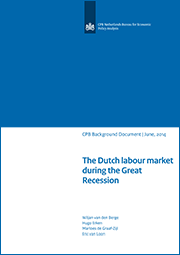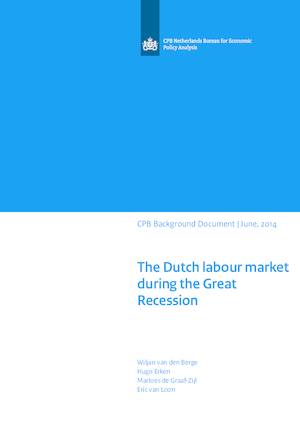The Dutch labour market during the Great Recession

Read CPB Book 11 'Roads to recovery', or go to the special webpage of this book.
The Dutch labour market has suffered severely from the Great Recession. Unemployment has increased substantially, from 3.1% in 2008 to 7.2% early 2014. We have to go back almost twenty years to observe a similar rate. Currently, over 600 thousand people are unemployed. One third of all unemployed have been unemployed for over a year. Before the crisis, the Netherlands had one of the lowest unemployment rates. Compared to many of its Northern European peer countries, the Netherlands has witnessed stronger unemployment growth. The unemployment level is now on par with or even above that of its peers. This paper documents and interprets what has happened on the Dutch labour market during the Great Recession, and examines the implications for the recovery from the crisis. It serves as a background paper to the labour market chapter in the CPB book “Road to Recovery” (Gelauff et al., 2014). In comparison with the book chapter, this paper provides additional information in several ways. First, the paper discusses the technical details of certain analyses presented in the book. Second, this paper contains more in-depths literature overviews. Third, the paper elaborates to a further extent on the institutional settings and policies relevant during the crisis, such as short-time working schemes. Fourth, the paper provides more international comparisons on certain aspects of the Dutch labour market.
See also CPB Background Document 'Three scenarios for European economic recovery'.
Downloads
Authors

